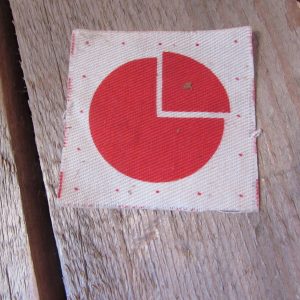-
 Cloth WWII Insignia 4th infantry 2nd Patt.
×
£20.001 × £20.00
Cloth WWII Insignia 4th infantry 2nd Patt.
×
£20.001 × £20.00
£48.00
GRACIE FIELDS – AUTOGRAPH ,PHOTO-SONG SHEETS
Gracie Fields (1898-1979), born Grace Stansfield, was the highest paid British actress and biggest film box office draw of the 1930s. Films of the singer comedienne included We’re Going To Be Rich and Smiling Along (1938). Fields was married to Monty Banks, who directed many British films of the same era, from 1940 until his death in 1950. She was created Dame Commander O.B.E. in 1979.
GRACIE FIELDS – AUTOGRAPH PHOTO-SONG SHEETS
Dame Gracie Fields DBE OStJ (born Grace Stansfield; 9 January 1898 – 27 September 1979) was a British actress, singer and comedian. A star of cinema and music hall,[2][3] she was one of the top ten film stars in Britain during the 1930s and was considered the highest paid film star in the world in 1937.[4] Fields was known affectionately as Our Gracie and the Lancashire Lass and for never losing her strong, native Lancashire accent.[5] She was appointed a Commander of the Order of the British Empire (CBE) and an Officer of the Venerable Order of St John (OStJ) in 1938, and a Dame Commander of the Order of the British Empire (DBE) in 1979.[6]
[edit]
[edit]
Fields was born Grace Stansfield, a daughter of Frederick Stansfield (1874–1956) and his wife Sarah Jane ‘Jenny’ Stansfield née Bamford (1879–1953), over a fish and chip shop owned by her grandmother, Sarah Bamford, in Molesworth Street, Rochdale, Lancashire. Her great-grandfather, William Stansfield (b.1805), of Hebden Bridge, Yorkshire, was a descendant of the Stansfield family of Stansfield, Yorkshire.[7]
Fields made her first stage appearance as a child, in 1905, joining children’s repertory theatre groups such as “Haley’s Garden of Girls” and Clara Coverdale’s “Nine Dainty Dots”.[citation needed] Her two sisters, Edith Fields and Betty Fields, and brother, Tommy Fields, all went on to appear on stage,[citation needed] but Gracie was the most successful. Her professional debut in variety took place at the Rochdale Hippodrome theatre in 1910, and she soon gave up her job in the local cotton mill, where she was a half-timer, spending half a week in the mill and the other half at school. Early newspaper clippings show her appearing locally in venues such as Todmorden (December 1913),[8] Milnrow (February 1914),[9] and Burnley (July 1914)[10] with an appearance at The Palace in Blackpool in April 1914.[11] The Burnley newspaper described her as “The Girl with the Double Voice”.[10]